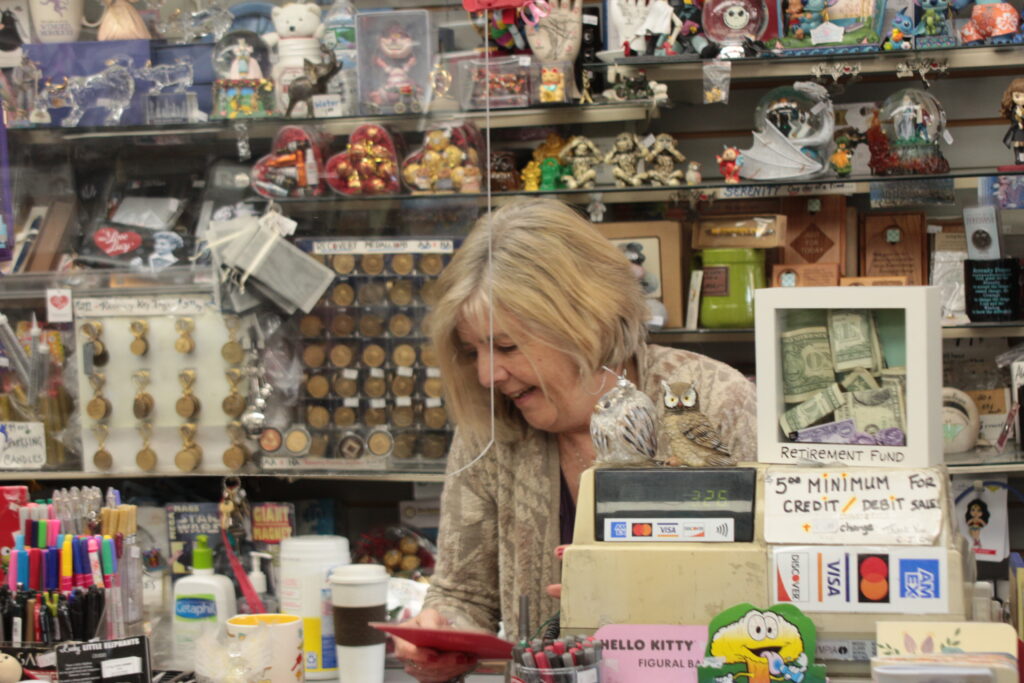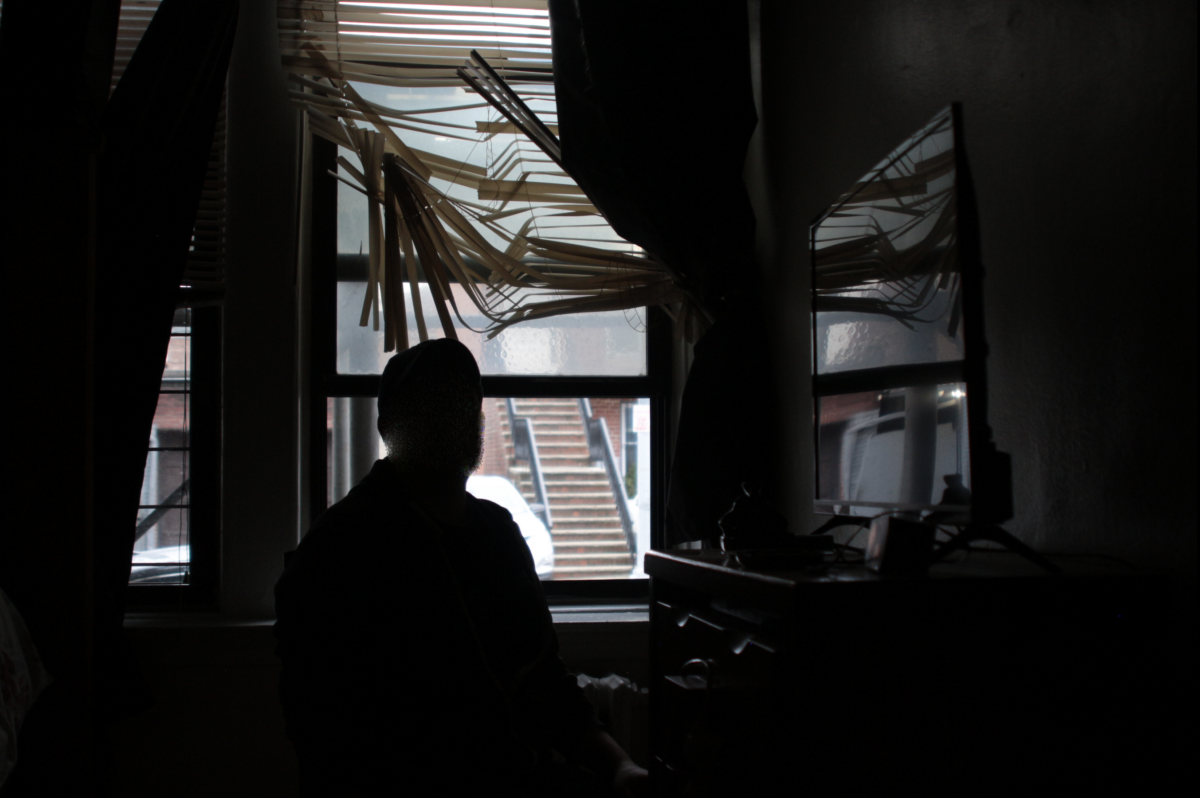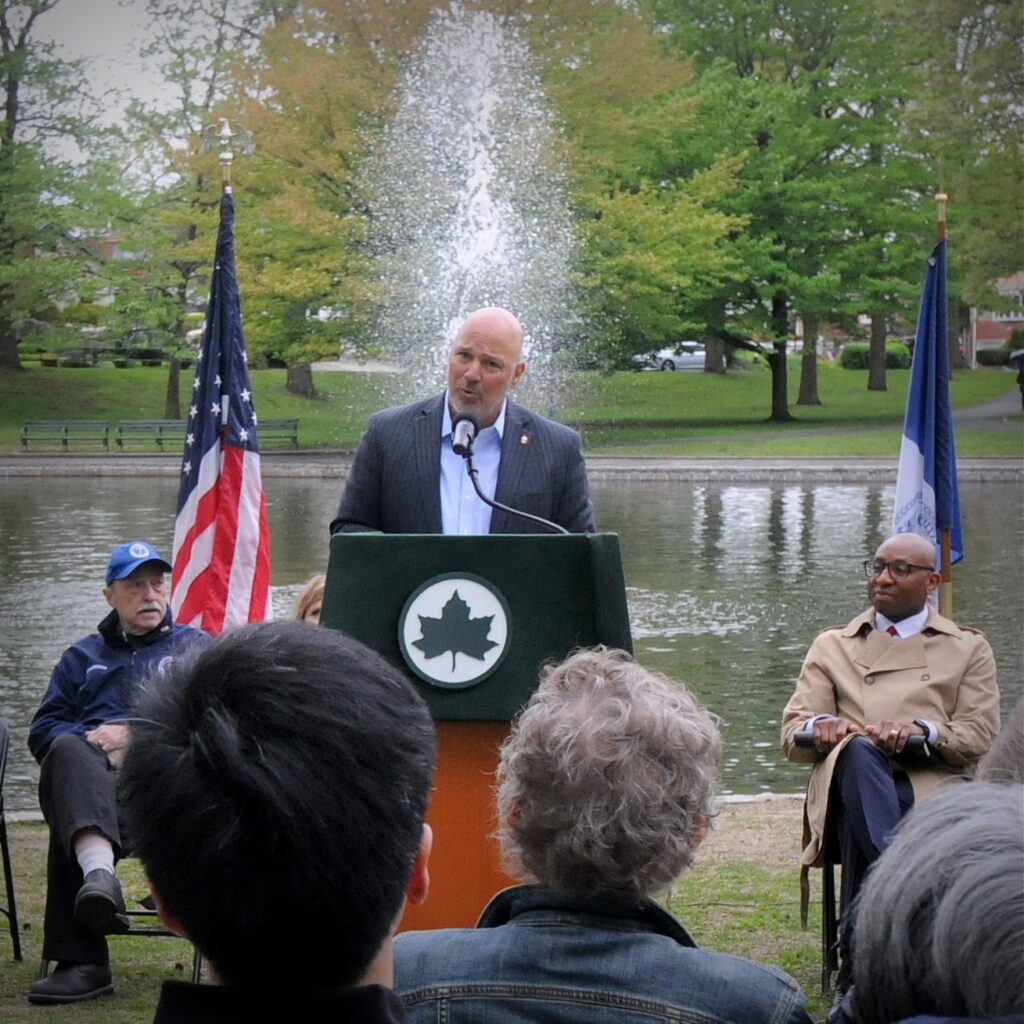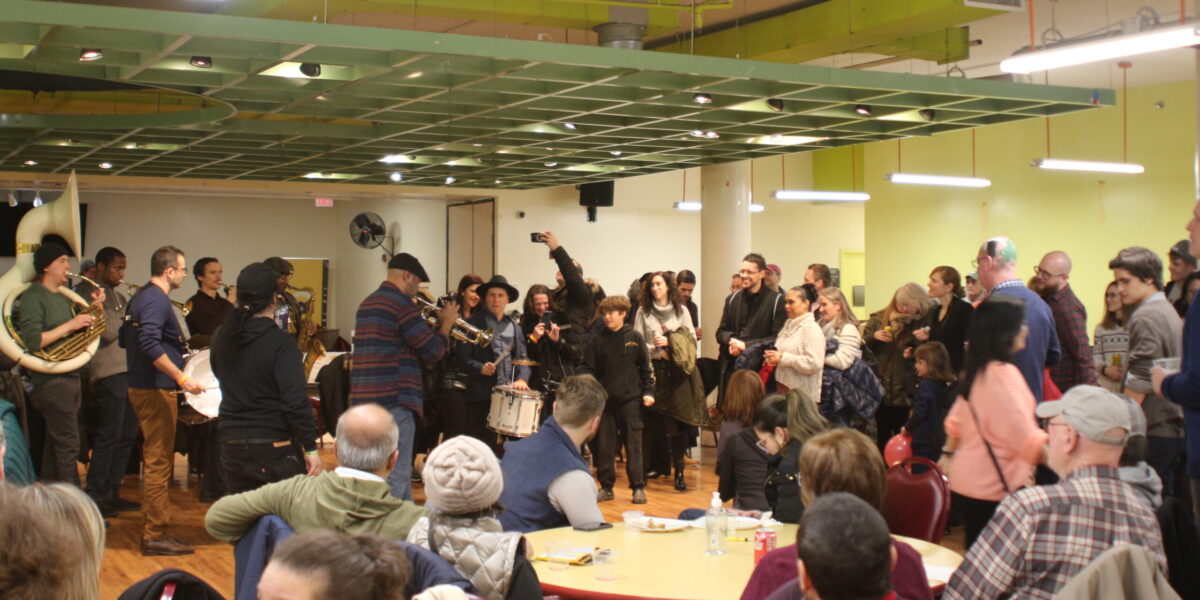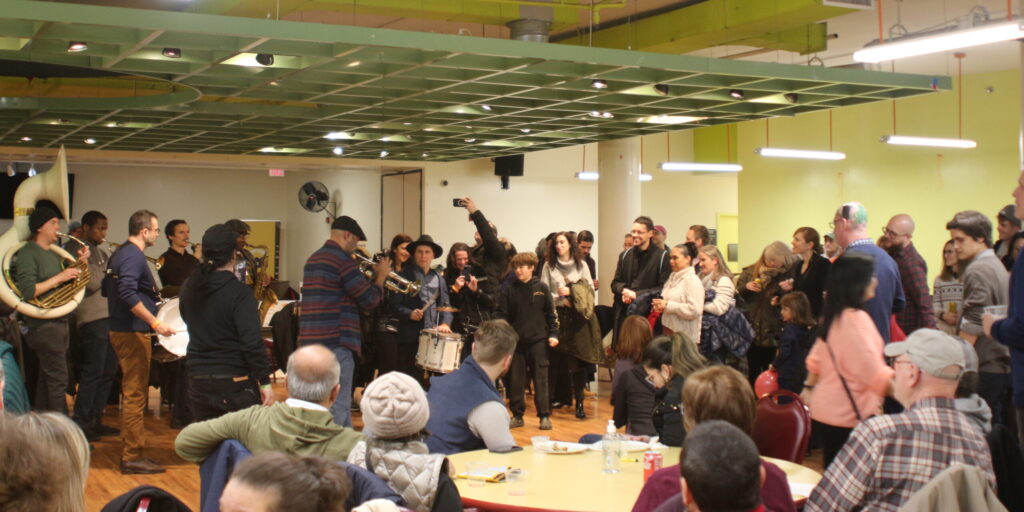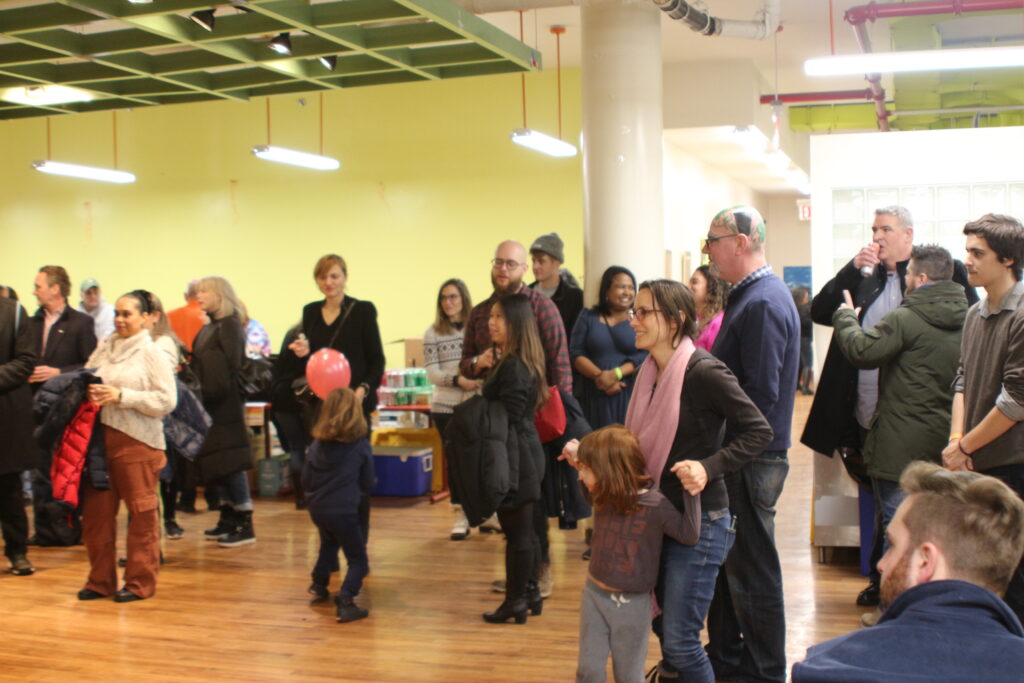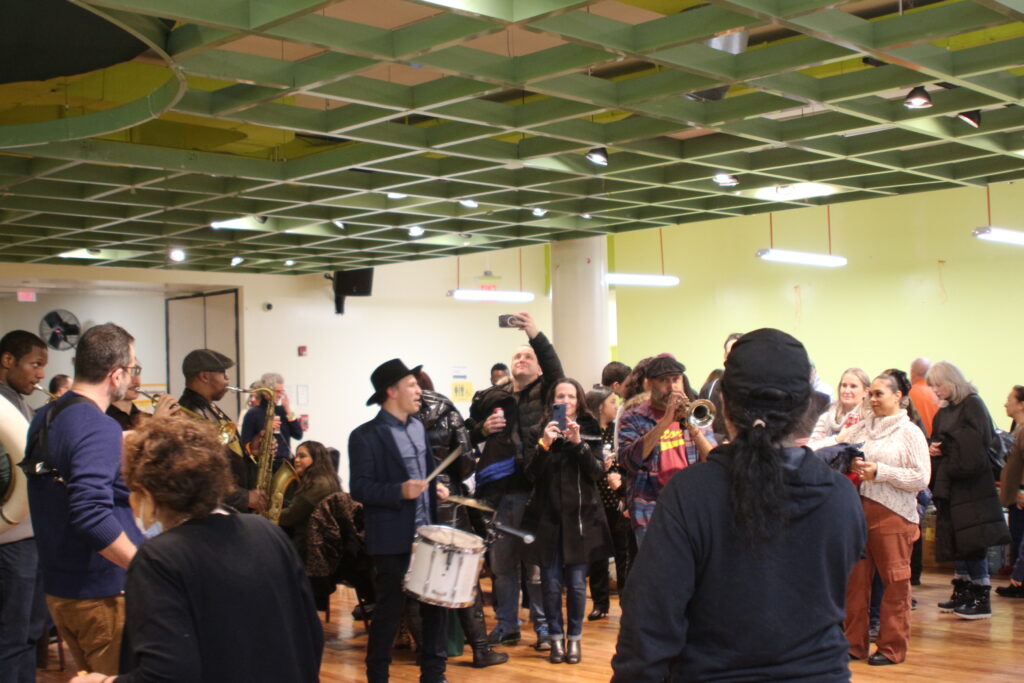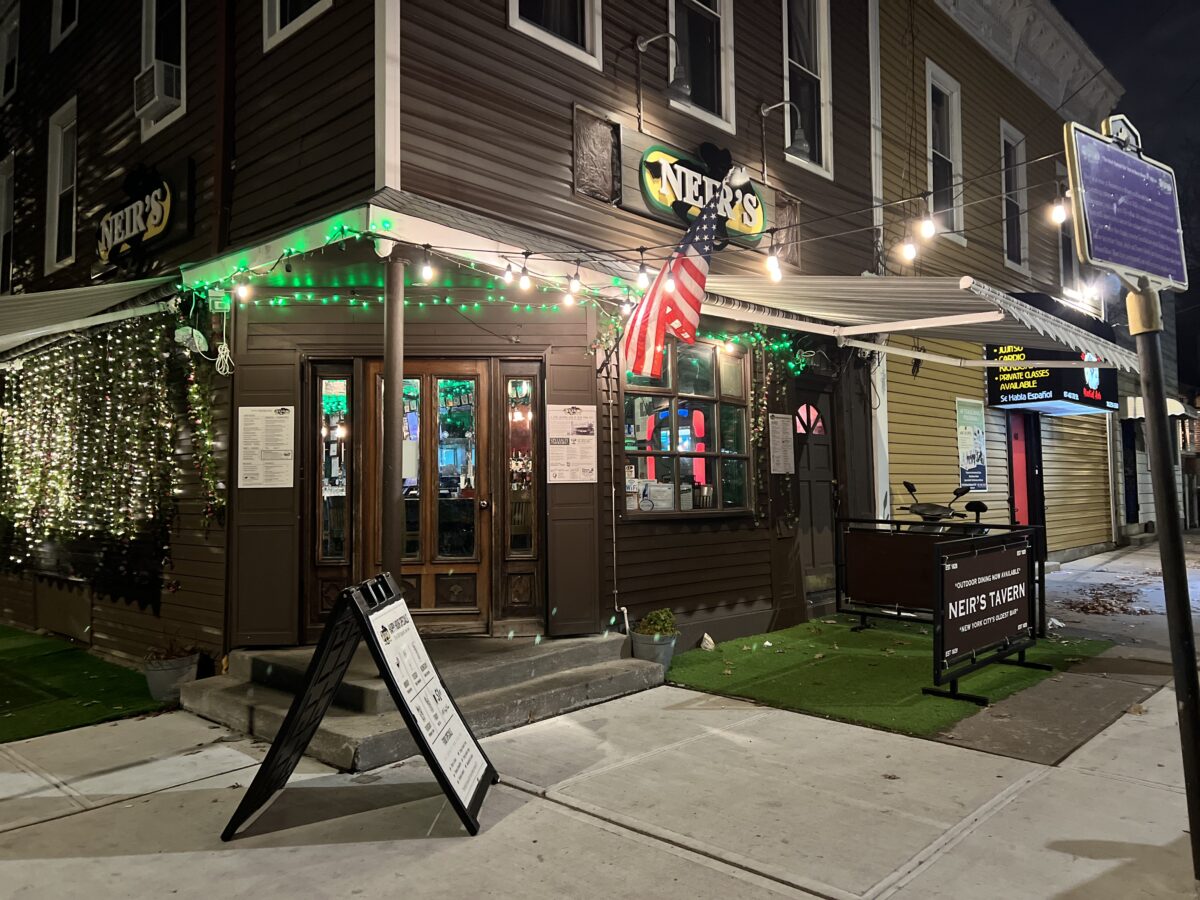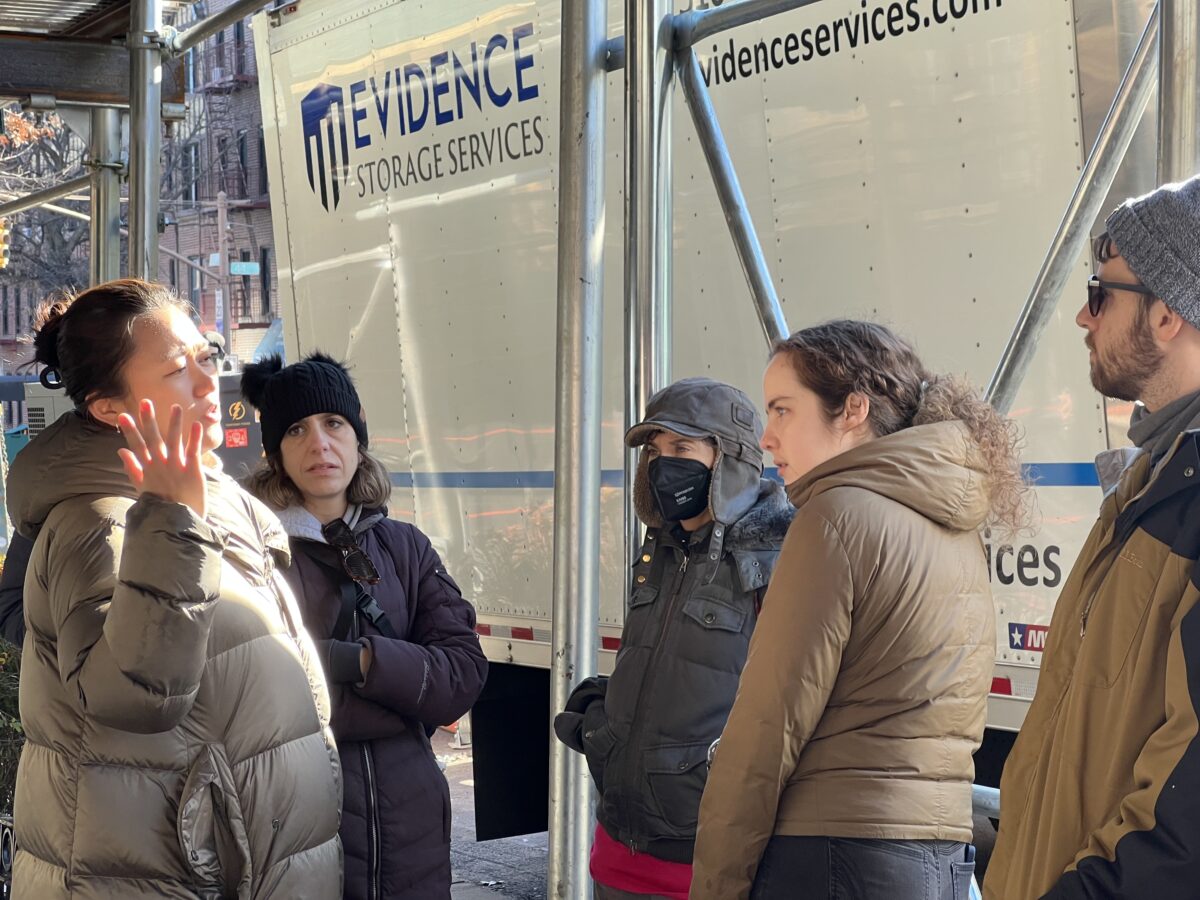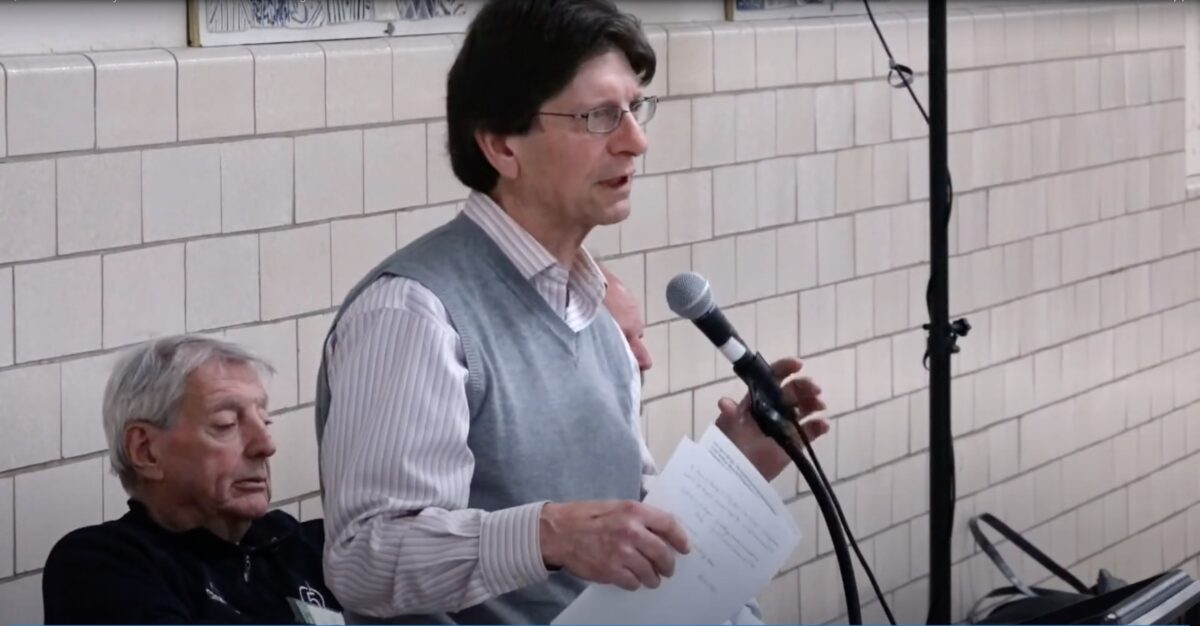By Celia Bernhardt | cbernhardt@queensledger.com
Garbage backed up to the fourth floor in a trash shoot, festering in the summer heat. Inconsistent heat and hot water in the dead of winter. Rats and roaches blanketing the laundry room floor.
These are some of the conditions lawyers say tenants have lived through in recent years at 84-53 Dana Court, a 37-unit building sitting on the edge of Middle Village and Rego Park. In his annual Worst Landlord Watchlist released mid-December, Public Advocate Jumaane Williams named Dana Court the #1 worst building in Queens—for the second year in a row.
List rankings for buildings are calculated based on the average number of open HPD violations per month throughout the year. Dana Court’s 2023 average—the highest in Queens—was 457.
“It’s been hell for tenants. This has been traumatizing,” Tenant A, who requested to remain anonymous due to fear of retaliation, said about the past three years.
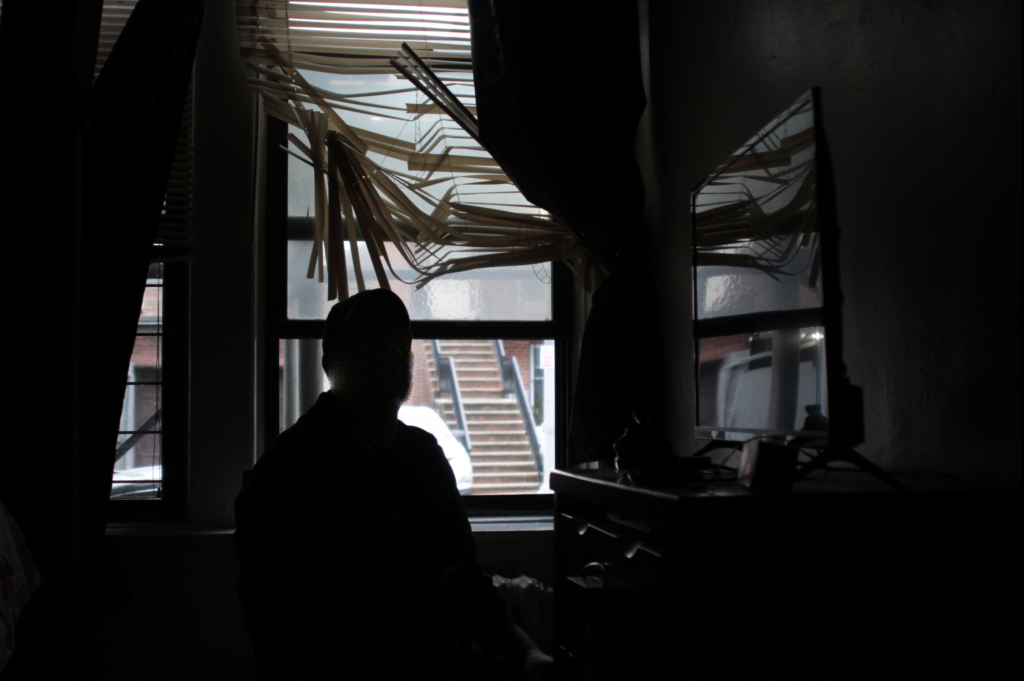
Photograph of an anonymous tenant. Credit: Celia Bernhardt
Until a foreclosure over the summer, the building was owned by Daniel Ohebshalom (who sometimes goes by the name Dan Shalom) by way of a limited liability company named Highpoint Associates VI. Ohebshalom is one member of an infamous real estate family whose profile includes Empire Management.
The Public Advocate’s watchlist lists Jonathan Santana as the former landlord of 84-53 Dana Court. But it includes a clarification that Ohebshalom can be most accurately pinpointed as the former property owner. “Johnathan Santana had been the designated head officer for owner Daniel Ohebshalom, including during the period covered by this list, November 2022–October 2023,” the watchlist’s website reads. “Recently, properties previously in Santana’s name have been re-classified with Daniel Ohebshalom as the officer on record.”
With 3,293 violations across 300 apartments in 15 buildings throughout Queens and Manhattan, the building owner broke his own record for outstanding violations this year, topping the “Worst Landlord” section of the watchlist for the second year in a row. Also listed under Santana/Ohebshalom’s name by the Public Advocate’s watchlist is Queens’ third-worst building: 90-38 170 Street, a 41-unit building in Jamaica that racked up an average of 406 HPD violations. Dana Court’s neighboring property, 63-36 Woodhaven Boulevard, is also listed; that building has three units and an average of 78 violations. In late October, the city won $4 million through three lawsuits against the landlord for tenant harassment and conversion of rent-stabilized units into illegal short-term rentals in his Manhattan buildings.
In 2021, seven Dana Court tenants began legal proceedings against the then-owners of the property for harassment. Though ultimately settled, that case sparked the beginning of several individual suits and, most recently, one claim collectively filed by 11 tenants alleging that landlords intentionally suppressed tenant organizing.
On Jan. 22, that anti-organizing suit was brought to a close through a settlement—likely marking the end, for now, of legal face-offs between Ohebshalom and Dana Court tenants.
“In my opinion, this is a vindication of the tenants’ claims,” Queens Legal Services attorney Alex Jacobs, who represented Dana Court tenants, said.
An attorney for Ohebshalom did not respond to a request for comment about the settlement.
“They treated us like animals”
Dana Court was a relatively normal place to call home, according to tenants — until September 2020. That month, a live-in superintendent who had kept the property in decent condition for years was fired. No one was brought on to take his place. Tenants and Jacobs say the sudden absence sparked a steep downhill turn in living conditions.
Left unattended, trash chutes in the building quickly became backed up to the fourth floor, attracting rats and roaches.
“For almost a year, the trash was left festering there,” Jacobs said.
Meanwhile, trash also piled up outside in the building’s courtyard, as the garbage cans couldn’t contain the waste of over 30 apartment units. Rats were a constant presence.
“We had roaches on the walls of the building, all over it,” Tenant A said. “There were flies everywhere.”
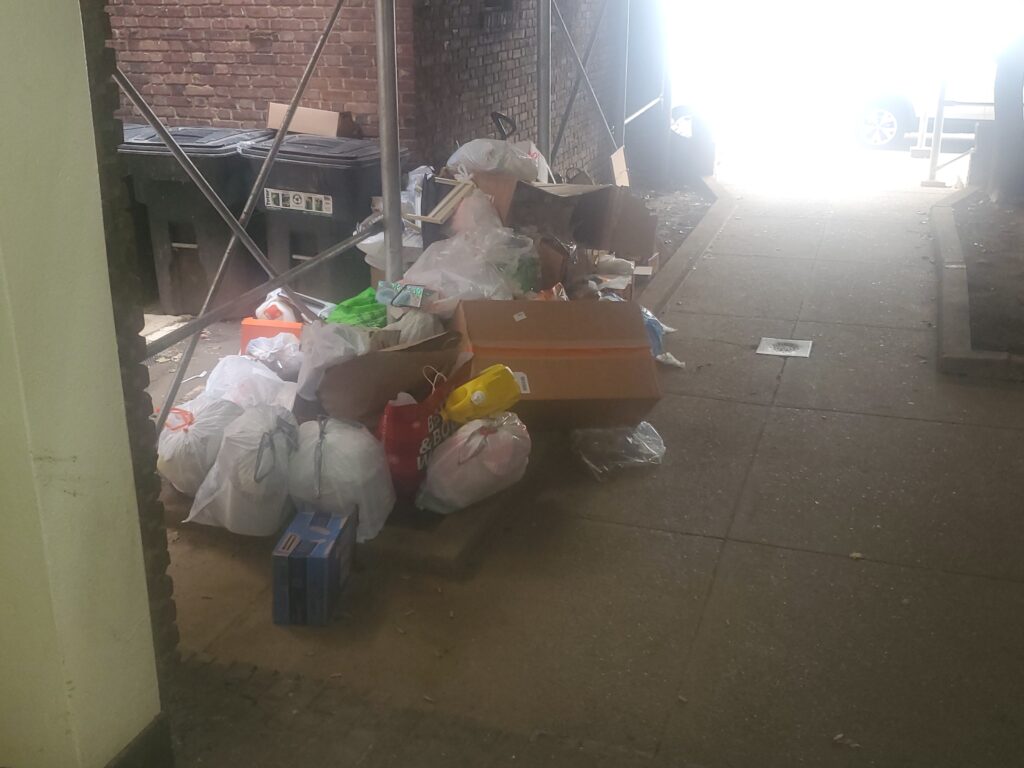
Trash piled up in the courtyard. Credit: anonymous tenant
As winter crept in, heat and hot water became “on and off at best,” according to Jacobs.
“It’s an old boiler. It doesn’t really register the temperatures, so it automatically shuts off to protect itself,” Jacobs said. “They had to email [Ohebshalom’s tenants relations manager, Robin Ignico] pretty much every week to say ‘The heat is off, the hot water is off.’ She would send a contractor to fix the boiler—they would just flip the switch—and the process would repeat each and every week. That’s how they’ve lived for the past three and a half years.”
“The heat always went out on the coldest, coldest days,” Tenant B, who requested anonymity due to fear of retaliation, said.
Tenant A recalled purchasing a camping sleeping bag to deal with the cold. “That’s how I could survive,” they said. “Not stay warm, but not die from hypothermia.”
JustFix, a website that compiles HPD data, states that the building has received 376 heat and hot water 311 complaints over the past three years. In an analysis of 311 data from 2017-2020, Comptroller Brad Lander’s office found that among buildings where tenants lodged at least one heat and hot water complaint, the average annual complaint number per building was 13.5.
Tenant B said that they work night shifts as a security guard, where they had to stay in cold buildings for hours. They recalled many early mornings of coming back home, anticipating the relief of warmth, and instead realizing the heat had shut off. “It took them a few days sometimes for them to give us heat,” they said.
”I wasn’t even able to take a shower. That’s how cold it was,” Tenant B said. “I [didn’t] want to get pneumonia — enough issues going on with my health.”
Tenant B said that despite the conditions, they didn’t have the financial means to simply move out and find another apartment.
“They treated us like animals, basically,” they said.
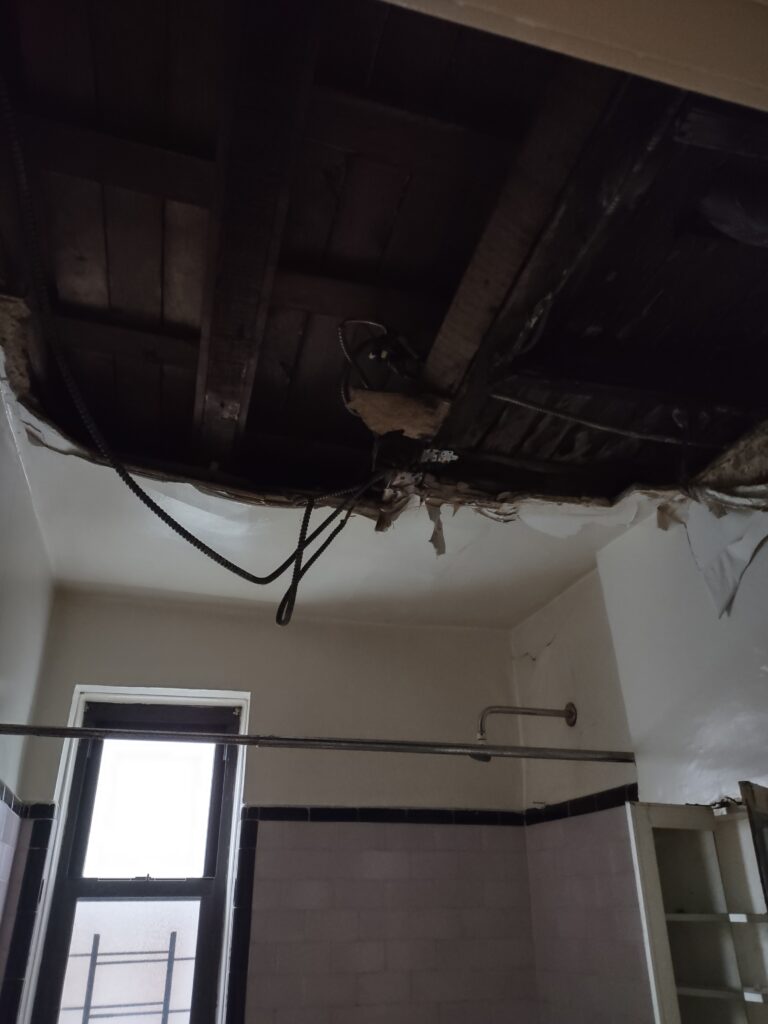
A hole in the ceiling in the vacant super’s unit. Credit: anonymous tenant
Residents formed a tenants association in the fall of 2020, and later began working with housing rights groups. Queens Legal Services took on the tenants’ legal case in the following spring.
The trash chutes were finally cleared a few months later, in July of 2021, according to Jacobs.
“Even then, though, there were still rats, mice, and roaches,” he said.
After the trash chutes were cleared, Jacobs and tenants said, the doors to them were locked shut. This made it difficult for some older tenants to dispose of their trash in the walk-up building.
“If you’re an eighty-year-old lady on the fourth floor, you’ve still got to walk down four flights of stairs every day with your trash,” Jacobs said.
Other conditions in the building remained largely stagnant. Heat and hot water remained inconsistent. The unit that a superintendent previously lived in was found with a hole in the ceiling and debris carpeting the floor. Some tenants had issues with gas shutting off, leaks in their apartment, rent being withdrawn from their bank accounts at inconsistent times, the behavior of maintenance contractors, and what they described as dismissive or rude communication from Ignico.
An attorney for Ohebshalom and Ignico declined to comment on tenants’ statements.
“You know, I’ve been doing this for seven years. I’ve seen a lot of heartbreaking situations; I’ve seen a lot of painful situations,” Jacobs said. “And what these tenants had to go through—not just with conditions, but with the way they were treated—it’s number one. It’s the worst thing I’ve ever seen.”
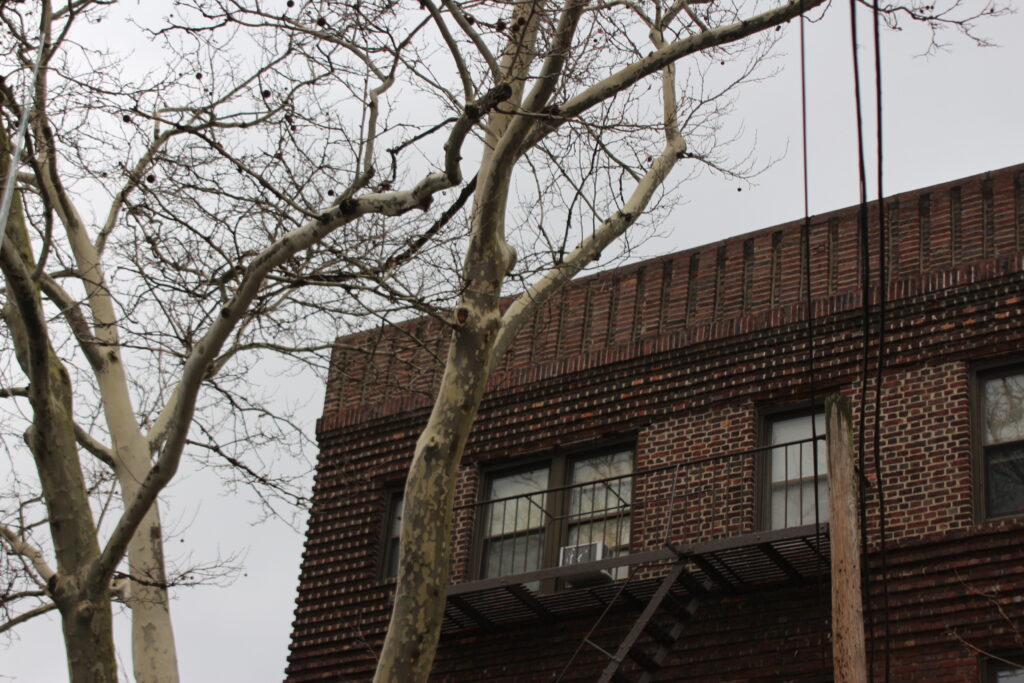
Credit: Celia Bernhardt
Changes of Hands, Cases Closed
In the Summer of 2023, MacGuire Capital — Ohebshalom’s lender for the property — initiated a Uniform Commercial Code foreclosure on 84-53 Dana Court, along with three other buildings that Ohebshalm had defaulted on loan payments for. Following the foreclosure and auction, Macguire attained ownership of the building’s corporation, Highpoint Associates VI, LLC, functionally becoming Dana Court’s new landlord. The bank hired Bronstein Properties to manage the building.
Since the change, Jacobs’ team has finalized multiple individual settlements for tenants.
The most recent settlement addressed an argument not about the living conditions themselves, but certain actions Jacobs alleged Ohebshalom and Ignico took to suppress tenant organizing in response to those conditions.
The petition claims that the two, “or their agents,” conveyed messages to an external tenant organizer that the organizer was not welcome on the premises without their permission. It also alleges that an “agent” — a superintendent in this case, according to Jacobs and tenants — said that management had told them that public flyers for the building’s tenants association were prohibited.
The Queens Ledger obtained a video of the superintendent holding a poster and engaging in a loud back-and-forth with a tenant. Although it doesn’t visually capture a poster being torn down, The video began with the sound of crumpling paper , and a tenant saying “Please stop taking those off my door.” The superintendent is recorded saying “The landlord told me you’re not allowed” in response.
Although the court will not rule on the validity of the claims, Jacobs sees the settlement as a win.
“We know that Robin Ignico and Dan Shalom are not shy about litigating and seemingly have infinite energy to blame tenants for the horrors that Robin and Dan unleashed upon their tenants and New York City,” Jacobs wrote in an email to the Ledger. “But here, our clients held their feet to their fire and Robin and Dan not only lost their building, they backed down from our litigation.”
Moving Forward
Under the bank’s ownership, many of the most acute conditions in the building have largely subsided. Interruptions to heat and hot water have been less common; repairs throughout the building have been ongoing. The number of open HPD violations sat at 287 at press time. In mid-January, the trash chute was finally opened for use again.
Still, some tenants express frustration with what they see as shoddy repairs, or repairs they see as among the most urgently needed still not being done.
“Bronstein’s doing an okay job,” Tenant B said. “But they’re not fixing the roof, or the laundry room that we’re supposed to have…there’s a lot of things wrong here still.”
Tenant C, who requested anonymity due to fear of retaliation, still lives with a large crack between the kitchen sink and wall in their apartment. They said the opening used to contribute to a cockroach issue in the apartment, which has subsided in recent months.
“It’s disgusting,” Tenant C said.
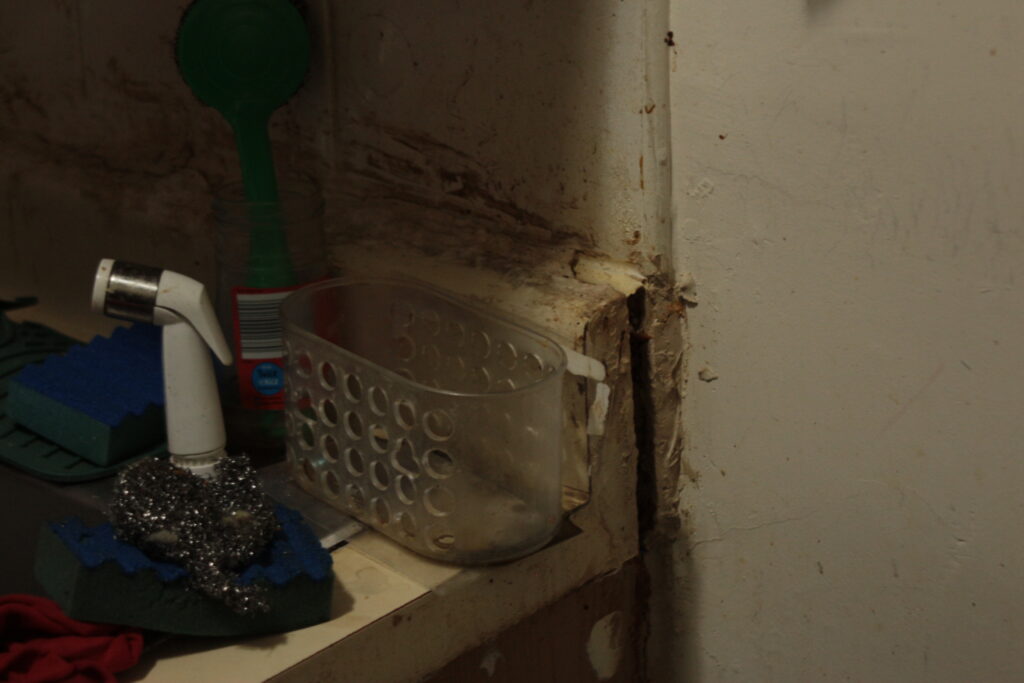
The gap between the sink and wall in Tenant C’s apartment. Credit: Celia Bernhardt
Bronstein told the Queens Ledger that they’ve hired a team of staff to work exclusively on the property. They listed scaffolding safety, building security, and fire code corrections as among the priorities they focused on first in their work on the building.
The future of ownership is another unknown hanging over the building.
84-53 Dana Court is listed in a property package for sale posted to the real estate website Crexi on Sep. 29, 2023. Bronstein and MacGuire did not respond to inquiries about their plans in regard to selling the property.
Tenant A said they’re worried about the range of possibilities for what happens next.
“If it gets sold to another landlord, we don’t know what they’re going to do or what’s going to happen,” Tenant A said.
As for what tenants are hoping for?
“Myself and other tenants want the building to be livable. We don’t want to be harassed by a super. We want work worked on in our apartments. We want the building to be maintained,” Tenant A said. “We don’t want to feel like the building’s going to collapse on us.”
“I want to have a good—decent, I’m not gonna say good—landlord… So you know, to improve the building,” Tenant B said. “A better property owner.”
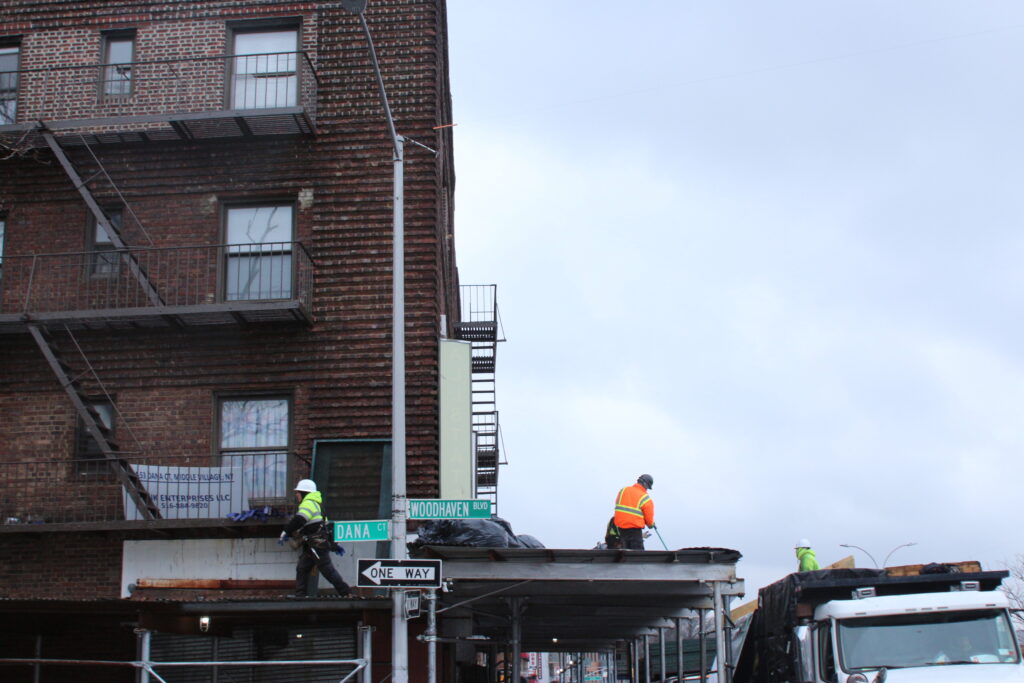
Work being done on the building’s scaffolding in February 2024. Credit: Celia Bernhardt

